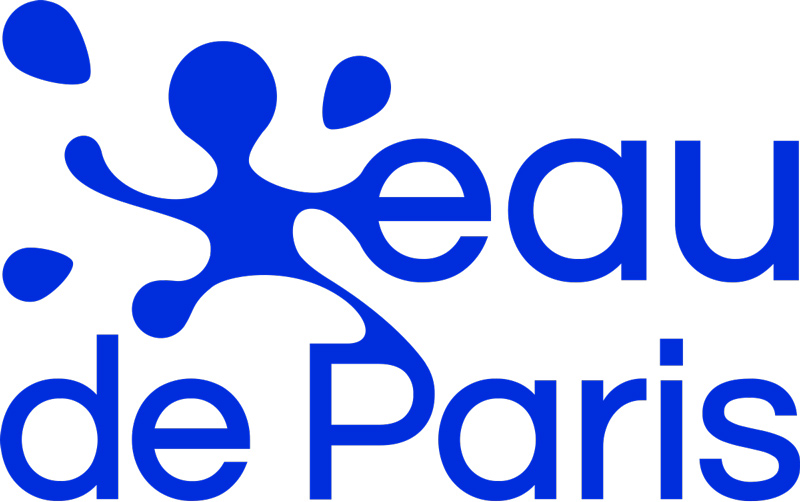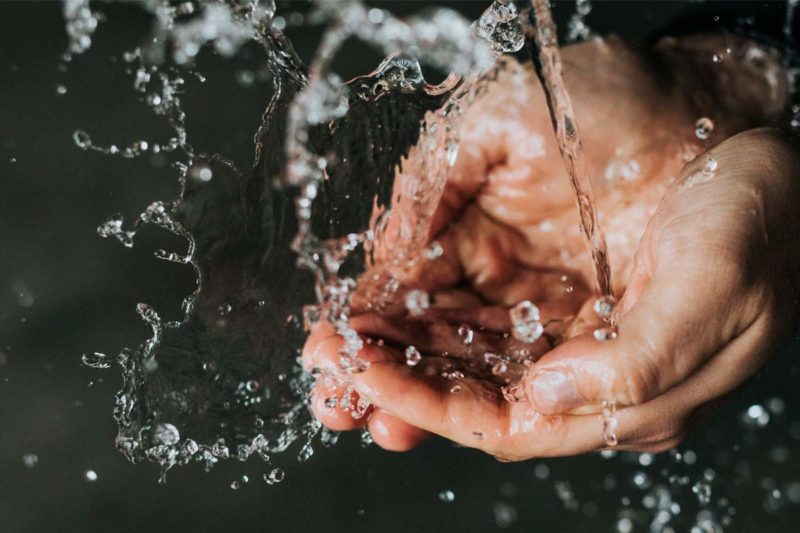Water is fast becoming more precious than oil. Meteorological and climatic disturbances are exacerbating heatwaves and droughts, but also stwrms and floods, while parts of France are landed with water restrictions every year. Here in France, where exactly do we lie on the scale between water stress and water shortage?
Water – an endangered resource
When demand outstrips the quantity of water available, it is referred to as water stress. That means we can no longer afford to waste it, so we must reduce demand or we will run out of water and find ourselves with a shortage. Water is a natural resource (you might even say re-source) that people drink but also use for farming (and therefore agri-food) as well as for industry, where it is used by a great many machines and production processes. In “modern” society, we don’t always use this resource wisely. Overconsumption leads to more production, more cutting corners on procedures and offshoring to countries where environmental regulations, particularly those on water pollution, are somewhat elastic or even non-existent. This imbalance is currently jeopardising access to fresh water for human consumption. In addition to this manmade overexploitation, access to water is threatened by climate change and global warming. Because in some parts of the world, people get their water from wells, directly from the source. If the area is affected by drought, and if there is no precipitation (rainfall) to top it up, the source dries up. Global warming is also increasing the frequency and severity of extreme weather events (floods, hail, heavy rain, storms and droughts). These disrupt the water cycle, making water unfit for consumption, altering subsoils and plants that can no longer retain water properly. These mechanisms account for water resource shortfalls, especially in summer.
The water cycle
Natural water resources, as opposed to manmade sources (such as a canal or a body of water) are made up of underground water tables, rivers and lakes. They get filled by precipitation: rain, hail and snow. Here in France, we get around 480 billion m³ of precipitation per year. 61% evaporates, 23% soaks into the soil and fills up groundwater reserves and 16% flows into waterways (lakes and rivers). The lack of rain, combined with high temperatures, means that certain reserves can no longer be topped up, hence the regulation of water use. However, it is the rainfall at the end of winter and in spring that soaks in the most, to be absorbed by the plants that emerge in spring. The combination of reduced precipitation at that time and very high temperatures in summer leads to lack of water in an area and to drought. Heatwaves are on the increase due to global warming caused by greenhouse gas emissions (not least CO2 and methane). They have direct impact on air temperature. The climate and its natural regulators (hot or cold air currents) are completely disrupted, as is the water cycle (evaporation, clouds, precipitation…). These phenomena can cause unusual switching between low and high temperatures from one day to the next, and thus lead to a lack of water.
Drought in France

82% of the water used in France comes from surface water because it is easier to collect it there than underground, and it costs less to do so. Except for drinking water, 62% of which comes from groundwater, which is cleaner. Although “stocks” in France remain positive, the resource is not inexhaustible. Drought in the true sense of the word is occurring more and more regularly, and is here to stay. Because people almost always think of drought as a lack of rain, but this does not always reflect the reality of dry soil. So we talk about agricultural drought when the soil is no longer damp enough to hydrate crops, and of hydrological drought when the water level in water tables drops to an unusual extent. Thus, when the top of the groundwater reserve runs out of water, the soil above it loses its moisture, and if it tops up a spring or a river, its volume drops. Should that happen, we are fortunate enough to have sufficiently abundant and diversified networks so that the population does not run out of drinking water. However, in the areas concerned, especially if the shortage is linked to farming, the latter will have to reduce its irrigation volumes. This allocation exercise is carried out by a collective management body which issues water withdrawal permits. These mechanisms can bring about odd situations. For example, near the Jura, in the Doubs, part of the river of the same name runs dry every summer. This has the nearby localities relying on tanker trucks for water supplies. Yet not far away, the local ski resort has built a snow factory that helps itself to water throughout the winter…
Water restrictions in France
Here in France, as in the rest of the world, rainfall volume is hugely variable. It ranges from 0.5 to 2 cubic metres per year depending on the region. However, when there is a lack of rain the soil dries out rapidly, with direct consequences on the topping-up of the water table.
The volume of “surface water”, as it is called, has been fairly stable for years now, although many areas have seen waterways dry up. However, groundwater reserves are getting depleted at a worrying rate. This process will be increasingly so if these reserves do not get filled back up, and if more is taken out than gets back in.
In France, we have around 270,000 kilometres of permanent waterways and an estimated 2,000 billion m³ of groundwater. So we have very plentiful supplies. And yet, to date, 36 French departments are affected by drought and are being forced to have restrictions in place:
- Vendée, Vienne, Eure-et-Loir, Loiret and Bouches-du-Rhône are on red alert
- The island of Groix in Brittany is in a “drought crisis”. There is a ban on watering gardens (other than vegetable gardens) and filling swimming pools.
- The same goes for Aquitaine, Charente, Charente-Maritime, Gironde, Deux-Sèvres, Dordogne, Lot and Pyrénées-Atlantiques which are on heightened alert, not forgetting Sarthe, Loir-et-Cher, Rhône, Ain, Alpes-Maritimes, Ardèche and Var which are also affected. The alerts may apply to certain areas or to an entire department, as is the case for Ile et Vilaine.
- 13 departments are on heightened alert. Farms’ water use is limited to certain times, and there is a ban on watering gardens and washing cars, roofs and facades of buildings.
- NB: the lower alert level allows watering of gardens before 11 a.m. or after 6 p.m. and also places certain limits on farmers. Over these last days of June 2022, in Ardèche the water level in the rivers has been so low that the Prefect is worried because there could be disruption to drinking water supply.
Public policy and necessary regulations
This being the case, it is unfair to place all of the onus on private individuals and farmers.
- Industry must also be supervised and regulated in terms of both volumes of water used and treatment of wastewater, which sometimes leads to pollution in unexpected places. For example, it has recently emerged that the Comté cheese industry is very polluting. Because the waterways of the Comté protected designation of origin area are polluted by the fertilisers used on the grassland where the cows that produce the milk needed to make this cheese graze. The subsoil in Franche-Comté being particularly porous, it is therefore permeable to fertilisers from manure that saturate the ecosystem with nitrogen and phosphorus. This triggers the uncontrolled growth of stringy algae that kills off fish.
- Water treatment systems on farms are often inadequate, since they have to be able to cope with a sharp increase in their output to meet demand.
- There may also be a drop in drinking water quality.
- Beyond restrictions, limits could be considered on the size of livestock farms themselves, where animals drink water and pollute it directly with their excrement. Moreover, feeding livestock calls for huge quantities of cereals, which also require mass irrigation and/or have to be imported from afar. While livestock farming can harm water supplies, legislating on meat (over)production could be a solution, bearing in mind that some of the meat produced gets thrown away when the use-by date has passed.
The case of certain multinational companies
Lastly, bear in mind that some brands of spring water draw it directly from the area’s groundwater, bottle it and then sell it. This process that can lead to a shortage for the local population if the the water table gets depleted faster than it can be topped back up. For example, 30 years ago the agri-food giant Nestlé purchased farmland through a subsidiary, officially to protect it from pollution, and secured pumping agreements with it. Some farmers now have to travel miles to fetch water, whereas it flows under their land but is “reserved” for bottling (750 million litres get exported abroad). We see the same problem with soft drink producers, who draw water all over the world. This water, which is no longer accessible to local populations, is sold to them in the form of soft drinks that are sometimes cheaper than water. This is the case in Mexico City, where water, which is not actually in short supply, has been “privatised” and the population, which is therefore consuming soft drinks to excess, is in the midst an epidemic of diabetes and obesity.
Solutions to conserve water

At national level, a real environmental policy is needed to regulate the use of water in farming, industry and the agro-food industry. There is an urgent need for companies to embrace responsible industrial practices and regulate their usage, which is sometimes very high in sectors where you might not expect it to be, such as construction. Eau de Paris, the company that manages the capital’s drinking water, has an extremely rare utility: a second water network alongside that of drinking water. It carries non-drinking water from the Seine and the Canal de l’Ourq, which is minimally filtered but not treated, because it is used for watering parks and gardens, for street and sewer cleaning and for topping up the lakes in Vincennes and Boulogne. Thus the re-use of non-drinking water without the need for treatment has great potential, especially when it comes to watering.
© Eau de Paris
Right now, it is also time to stop making economic calculations on the basis of an infinite resource and take into account the growing scarcity of water for each project. We should also embrace the associated best practice so that the effort does not fall solely to private individuals. The latter can do their bit by setting up rainwater collection systems for the garden, reducing the filling of swimming pools, installing pressure regulation systems and cutting down on toilet flushing… Lastly, consumers can take action by boycotting the products of companies that misuse the water trade whereas water should be a common good.
It is not by chance that water is often used as the symbol of life. Without water, there can be no life. So it is vital to moderate our water usage, including indirect water usage via our purchases. We can do so by avoiding products that require a lot of water to manufacture, and also those that emit a lot of CO2, since global warming contributes to water scarcity.
This leads us to the same conclusions when we talk about the environment: boycotting fast fashion, buying second hand, cutting down on meat etc… Here in France, we are fortunate enough to have plentiful reserves, so it is very much a question of management, to make up the shortfall due to the increasingly frequent droughts.
Elsewhere in the world, the shortage will be such that there will be no measure capable of compensating for the drought, which will impact on populations and farming. Faced with the ensuing famines, these populations will have, and already have, no choice but to move elsewhere.







